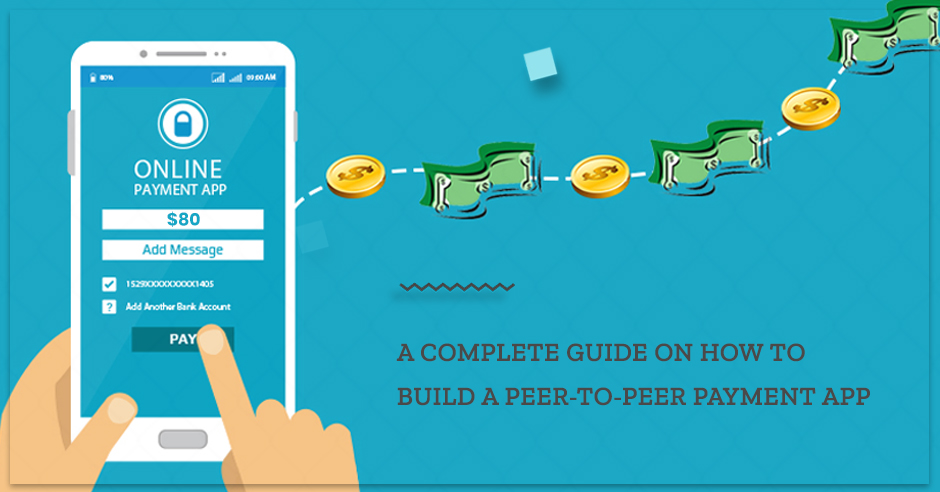The digital revolution has brought tremendous advancements and simplified the ways by which we carry our day to day activities. When it comes to shopping, now it is possible to order anything from the comfort of your home. Apart from making payments, it is now quite easy to send and receive money using a mobile app using a convenient and secure method. It is where peer to peer mobile apps come into the picture. A peer to peer mobile app allows the electronic transfer of money to a friend/colleague. The peer to peer mobile apps are designed by payment app development company for personal use and the transaction time varies depending on the method used.
Types of Peer to Peer Payment Apps :
1) Bank-centric solutions
2) Stand-alone financial services
3) Social/messages/web platforms
4) Mobile OS/device manufacturers
1) Bank-Centric Solutions:
The P2P applications that have banks as one of the parties in the applications constitute the bank-centric solutions. Many banks give the customers the required devices and also makes sure the merchants have the Point of Sale (POS) acceptability. The apps can hence draw and deposit money directly from the bank account rather than depending on any stored wallets.
2) Stand-alone Financial Services :
The apps have their own wallet feature that allows users to store money in their wallet before they offload into another bank account. The model comes in handy for users, where they have limited access to banking. PayPal and Venmo are prominent services in this category.
3) Social/Messages/Web Platforms :
Social media is an excellent platform to stay in touch with your friends and colleagues. Social media giant Facebook has launched the payment feature in its messenger long back in 2015 that allows users to transfer money within the app itself. Examples of some of the social media platforms that support P2P transfers include Whatsapp, WeChat, SnapChat, SquareCash and so on.
4) Mobile OS/Device Manufacturers :
Some device manufacturers such as Apple and Samsung allow money transfers within the product ecosystem. The devices also employ device-based fingerprint authentication for improved security.
Features to Include in Peer to Peer Mobile Apps
Before proceeding with P2P app development, a mobile app development companies must make sure to include the following features in the app. Let’s take a look at the must-have features for a peer to peer mobile app.
Notification:
The feature is necessary to inform the user whenever the payment is initiated or received. Also, it sends notifications for ticket bookings, bill due dates and so on.
OTP Verification:
The app must include OTP verification before any initiation or completion of any transaction. It accounts for higher stringency and security of the transaction. Also, few of the apps also ask to enter the OTP before the user logs in.
Transaction History:
The feature offers a complete picture of user transactions made during a particular time period. It also has a custom feature that enables them to get the transaction history for a particular time period.
Transfer Amount to Bank:
The P2P payment apps also offer the flexibility to transfer the money from apps to the bank account.
Fingerprint Authentication:
P2P payment apps contain all the bank details and user credentials. Hence, the app developers must ensure to inculcate foolproof security to prevent misuse of the apps. One of the best modes of authentication involves the fingerprint unlock. As the user employs his fingerprint to confirm the identity, it accounts for greater security.
Chatbot:
The user transactions happen round the clock; hence there should be an embedded Chatbot feature in the app that rectifies the user queries. There are multiple cases of transaction failures that happen while transacting funds.
Challenges Faced While Developing a Peer to Peer Payment App
The development of P2P payment app has a set of technical challenges.
Technical Challenges
Currency Conversion:
Peer to peer apps are generally preferred over traditional modes owing to their faster fund transfers. But the most difficult part comes when there is a need for currency conversion in real-time. Hence, a developer must ensure the conversion happens within a short time without impacting the funds transfer.
Geographical Barriers:
One of the major obstacles faced by P2P apps is that they are restricted to a particular region. So, for the P2P apps to be successful, they must be able to break the geographical constraints.
Comply with PCI DSS Policies:
PCI DSS stands for Payment Card Industry Data Security Standard (PCI DSS). The policy covers how an organisation addresses 12 requirements of PCI DSS. All the banks that deal with confidential banking must comply with PCI DSS policies.
What Future Holds for Peer to Peer Application Development?
The peer to peer application development is still in the naive stage and is expected to grow exponentially in the coming years. Many players are expected to join the P2P bandwagon owing to its incredible potential. The increased adoption of P2P apps by the people is a clear indication of the rapid transition from physical money to digital currency. There is still enough room for the entry of startups as the niche offers plenty of scope for growth. Hence, it is the right time for those looking to invest in P2P payment app development and reap the benefits.
